Rennie Scaysbrook | June 13, 2018
We sit down and have a fun chat with the road racing legend
Eddie Lawson is the most successful American to ever compete in the 500cc/MotoGP World Championship. Four times the Californian stood atop the podium as the fastest motorcycle racer in the world with titles on Yamaha and Honda machinery, but now life is lived at a more relaxed pace.
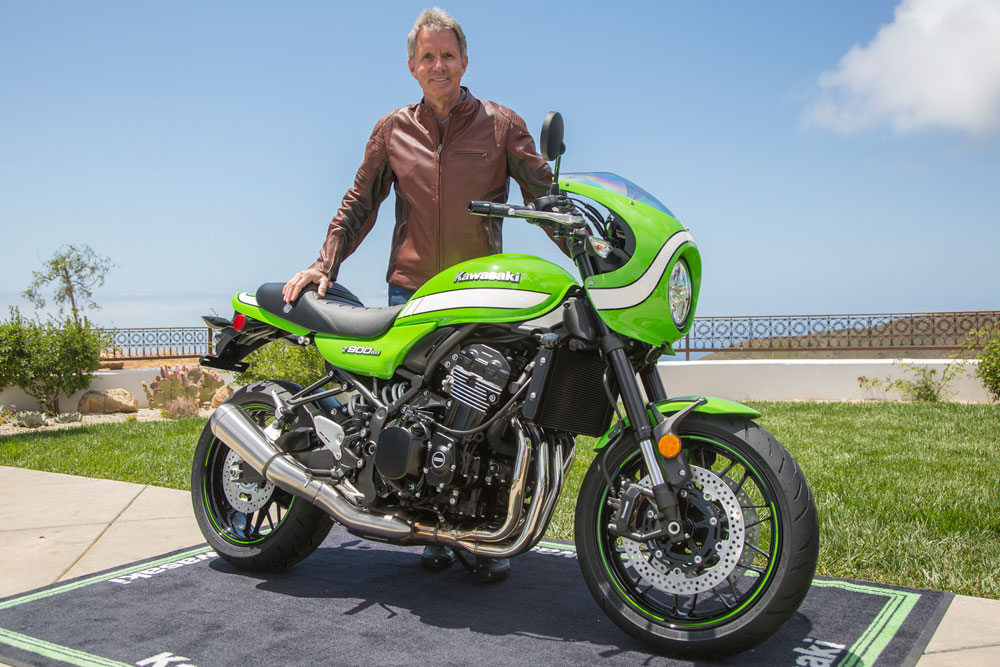 Eddie Lawson was as stoked as he was surprised that Kawasaki gifted him this brand-new Z900RS Café at the media intro in Malibu.
Eddie Lawson was as stoked as he was surprised that Kawasaki gifted him this brand-new Z900RS Café at the media intro in Malibu.
Lucky for us, the man they called “Steady Eddie” is still riding motorcycles, and has rekindled the relationship that made him most famous in the U.S., with Kawasaki USA.
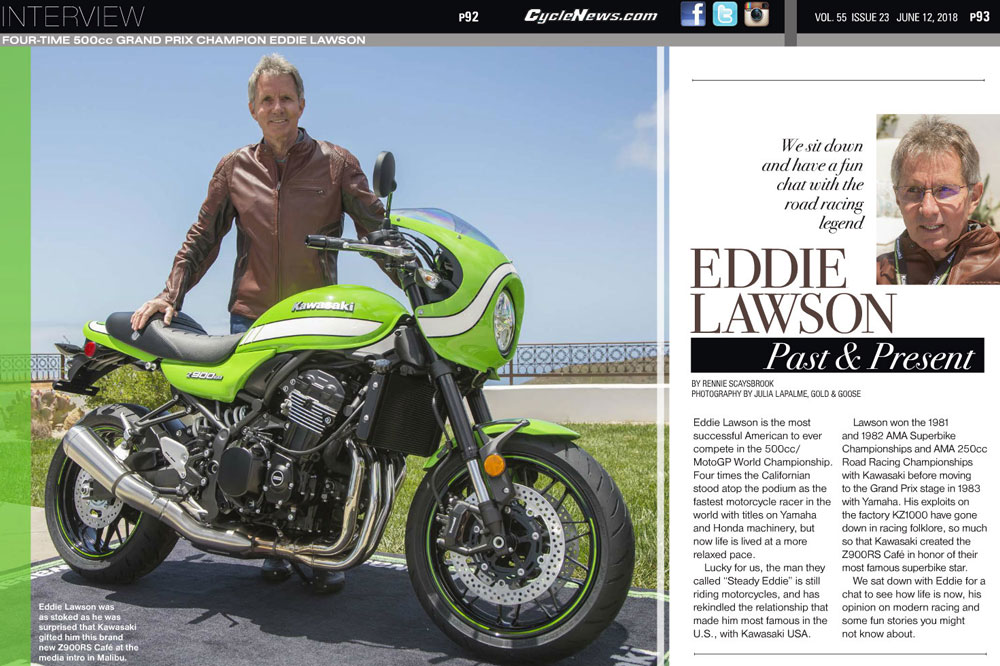
Photography by Julia LaPalme, Gold & Goose
Lawson won the 1981 and 1982 AMA Superbike Championships and AMA 250cc Road Racing Championships with Kawasaki before moving to the Grand Prix stage in 1983 with Yamaha. His exploits on the factory KZ1000 have gone down in racing folklore, so much so that Kawasaki created the Z900RS Café in honor of their most famous superbike star.
We sat down with Eddie for a chat to see how life is now, his opinion on modern racing and some fun stories you might not know about.
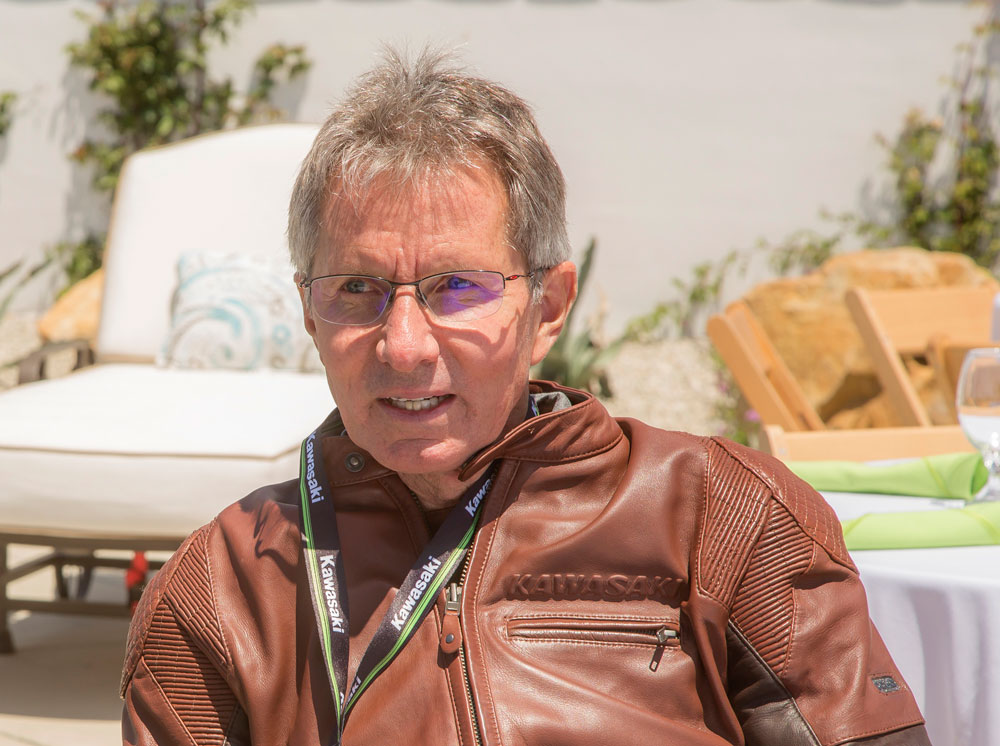 Lawson is still out riding motorcycles but mainly focuses on motocross these days.
Lawson is still out riding motorcycles but mainly focuses on motocross these days.
What are your thoughts on Kawasaki essentially re-creating your bike for the current generation in the Z900RS Café?
I like the retro stuff anyway, but what they’ve done with this is very cool. I hope I can get one. I haven’t had the chance to ride one yet. I have the old version, but the new one, I can’t wait to take a spin on.
Do have a 900RS yourself?
No, I have the ELR (after this interview was completed, Kawasaki gifted Lawson his own Z900RS Café).
When you got one of those bikes, was that was a gift from Kawasaki?
That was from Kawasaki for winning the ‘81 championship. They gave me bike number 21 (Lawson’s race number). They did offer bike number one, but I said I’d rather have 21. Now looking back on it, if I had known how popular they would be, I would have got both!
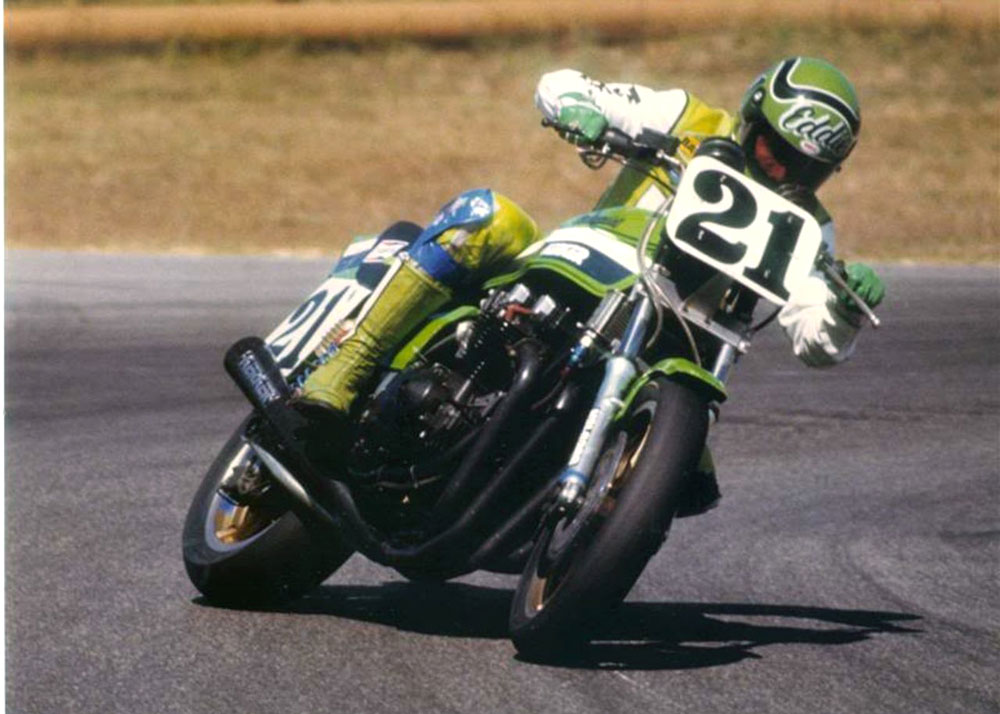 Lawson on the gas on the factory Kawasaki in the 1981 AMA Superbike Championship.
Lawson on the gas on the factory Kawasaki in the 1981 AMA Superbike Championship.
You seem to be almost more known in the U.S. for your association with Kawasaki than Yamaha.
For sure. You don’t know how good you have it until many, many years later, of course. Everyone at Kawasaki at that time was really into the racing. All the people up front in the offices and the corporate part of it were attached to it. They were really into the races. They would go to the races. The popularity of superbike racing back then was really at a high level. Honda hated us and we hated them. Suzuki hated us and we hated them. We were all at each other. It was Freddie Spencer and Wes Cooley and Mike Baldwin. It was so competitive. To win a race or even a championship was a big deal back then. I look back on it now and I think about the commitment that Kawasaki put in and the effort they put into it. It was big. You don’t realize it until you look back on it.
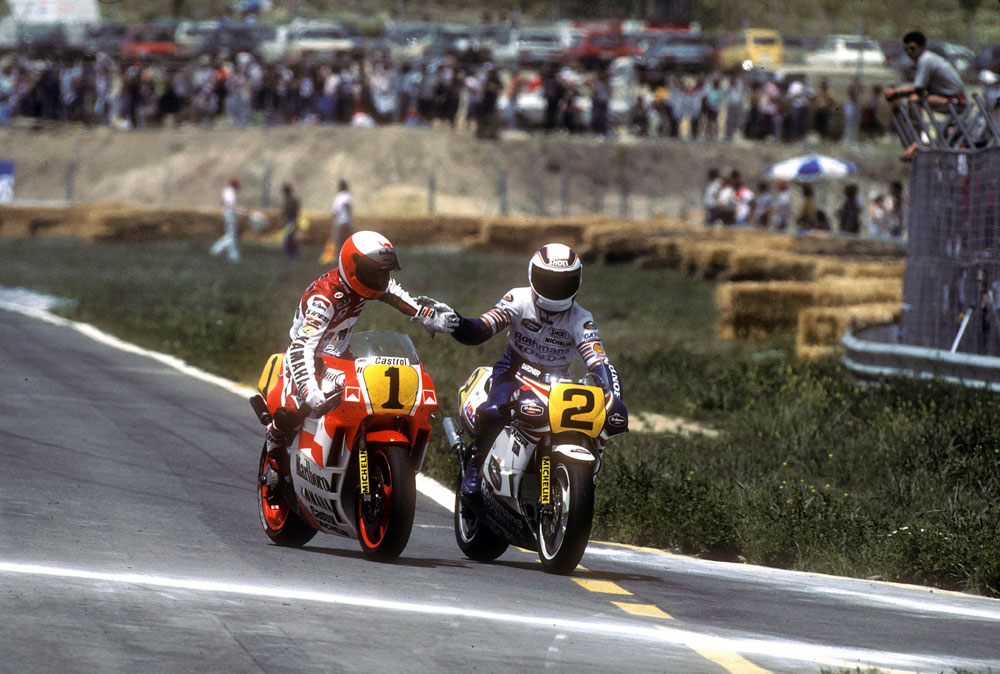 Lawson (left) and Gardner’s (2) rivalry would define 1980s Grand Prix racing.
Lawson (left) and Gardner’s (2) rivalry would define 1980s Grand Prix racing.
They treated me so good. I have nothing but great memories. I hate to use it—it’s a cliché to say, “Those are the good old days,”—but for me when I look back, I hate to say that, but they were the good old days. Everyone uses that term too much, I think. But I really look back on it with fond memories.
You were ’81 AMA Superbike Champion with Kawasaki. Were there any thoughts of going to 500 grand prix with Kawasaki?
I wanted to, but that’s right when they pulled out of GP racing. That KR500 with a little bit of development would have been, for sure, a top bike. It just needed the wheelbase shortened up, some things like that. But it was fast. It would have been competitive if they kept going. I’m a little bit sad that they didn’t go.
 Rookie Lawson (27) chasing Freddie Spencer (3) and Randy Mamola (6) in 1983.
Rookie Lawson (27) chasing Freddie Spencer (3) and Randy Mamola (6) in 1983.
You go to Yamaha then. That must have been like going to the enemy almost in a way.
Kind of it was, but I wanted to go to Europe and race. No different than (Wayne) Gardner. He wanted to go to Europe and race. You can be the top in your country in superbike, but, of course, then, the world championship was a big deal.
With Kawasaki, we won four national championships in three years, two 250 titles that nobody really talks about. It’s always the superbike. But Kawasaki put in a big effort with the KR250. We won those two championships as well.
When you went to Europe, that must have been a big culture shock, a big difference compared to living in California.
Absolutely, it was, for sure. Everything was different. I think Australians and Americans, they adapt to anything. We just kind of adapt and we go. I was like, “okay, this is how it is.”
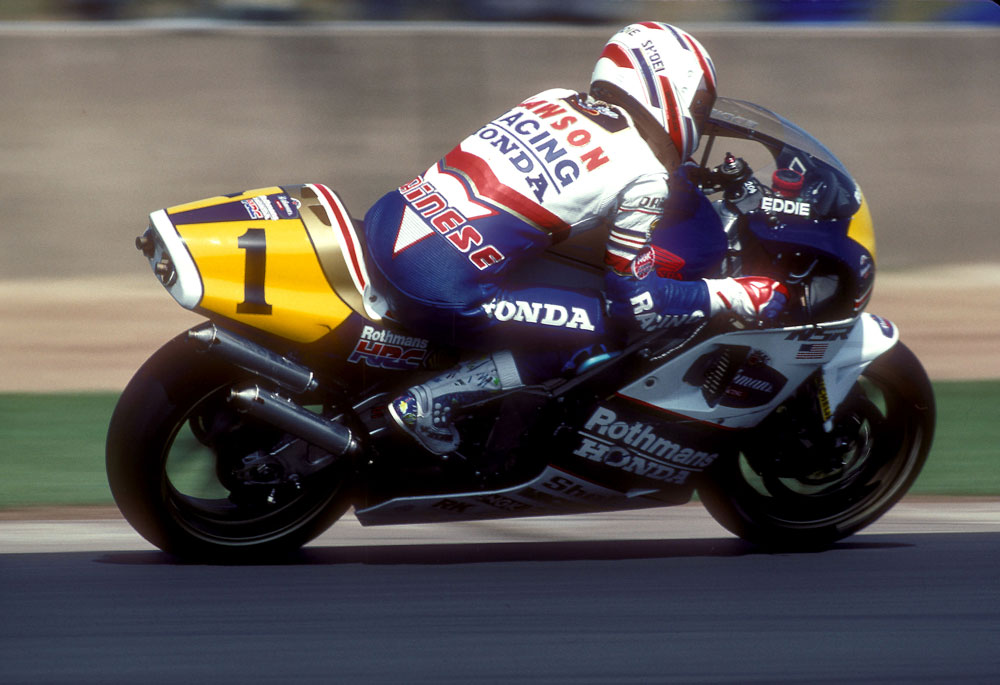 Lawson’s crowning world championship glory was his victory on the 1989 Rothmans Honda NSR500. In the process, he beat his career-long rival Wayne Gardner on the same bike.
Lawson’s crowning world championship glory was his victory on the 1989 Rothmans Honda NSR500. In the process, he beat his career-long rival Wayne Gardner on the same bike.
You won your first race ’84, the year you won the championship?
Yup, South Africa in the rain.
You won the championship 1984, ’86, ’88, ’89; what was your favorite championship, if you have one?
I can’t have a favorite. They were all really tough. If I had to pick one I’d pick ’89. A lot of people were saying we weren’t going to be able to adapt, and we weren’t going to do anything that year. HRC really worked hard.
That 1989 Rothmans Honda NSR500 has gone on to have a fearsome legacy. Was it as bad as people say?
There was nothing bad about it. I don’t know why (it has the reputation it has)…Mick (Doohan) and Wayne (Gardner) kind of bagged on it a bit. I thought it was a good bike. It wasn’t that hard to ride. They said it came in really hard and power was abrupt and it didn’t handle. I didn’t find that to be the case at all. The only way I can explain that is ask Wayne Rainey or Kevin Schwantz if that was a bad motorcycle. They’re not going to give me any credit for it!
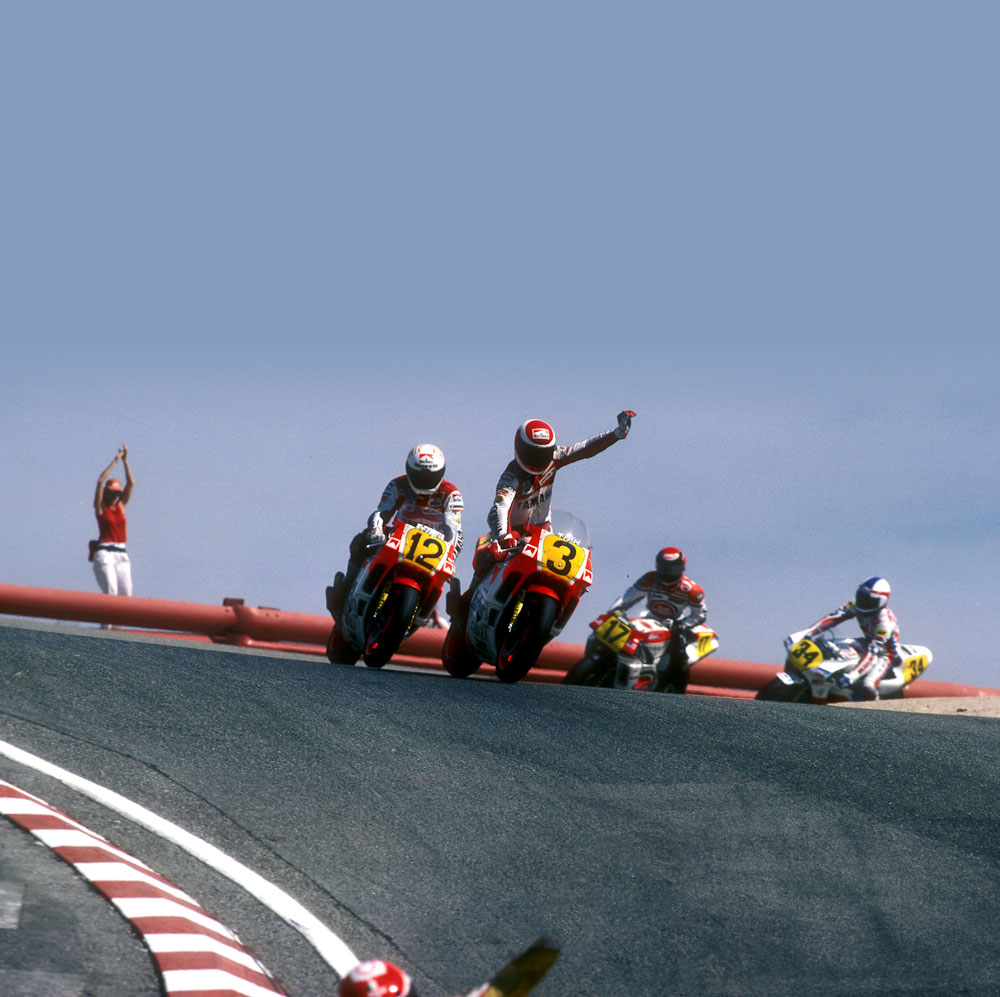 It’s hard to beat winning at home! Lawson took first in the inaugural American 500cc Grand Prix at Laguna Seca in 1988.
It’s hard to beat winning at home! Lawson took first in the inaugural American 500cc Grand Prix at Laguna Seca in 1988.
Have you got a favorite race that you won in your grand prix career? One that stands out?
Not really. Any time you win a grand prix race, that’s not an easy thing to do, so I enjoyed all of them. If I had to pick one, maybe at home. It would be like Wayne Gardner, Mick (Doohan) or (Casey) Stoner winning in Australia. We won the 1988 Laguna Seca race. That was fun because you win in front of your family and your friends.
What was Kenny (Roberts) like to work with?
Kenny is Kenny. He was good. He really put in a big effort on trying to get the bike right and trying to get an edge. You just have to know how to take Kenny. He’s great once you know him.
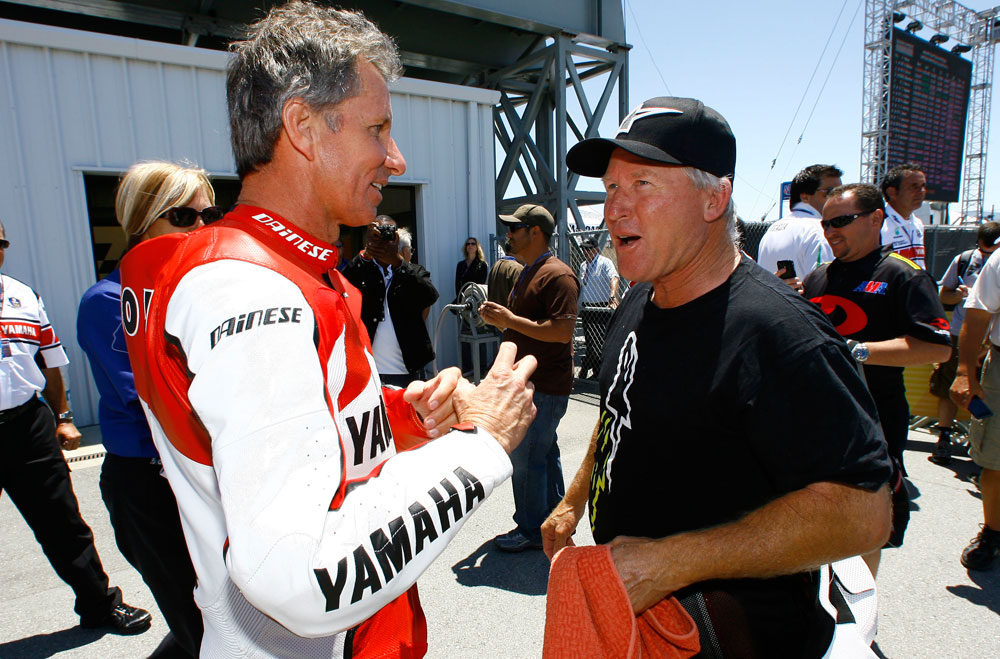 Lawson (left) with his old boss and mentor Kenny Roberts back at Laguna Seca in 2008.
Lawson (left) with his old boss and mentor Kenny Roberts back at Laguna Seca in 2008.
Have you got any good stories of riding with Kenny Roberts from back in the day?
There was some crazy stuff. The one story I like to tell, and he (Roberts) hates that I tell it, is a pretty funny story.
My first year in ’83, I couldn’t quite get up to speed on cold Dunlop slick tires when they were new. It took two or three laps just to get them up to temperature and working. Kenny would go straight out and after three corners he’d just go. That was a hard thing to learn.
At Monza, one of the fastest tracks we rode at, Kenny said, “You stay right on my back wheel. We’re going to go out, brand-new tires, and you stay right on my back wheel.”
“Okay, okay,” I said.
I’m like, “oh crap, here we go.” We go out. We go down the hill at the back of the track. We’re flat out in sixth gear, and then there’s a fast chicane before you go onto the back straightaway. So, we go under the bridge and we go through this first left. I’m staring through the bubble looking at him and I’m right on his back wheel, and he just disappears, straight through the gravel trap. He’s going end over end, ass over teakettle.
Here I am leaned over on brand-new, shiny, cold slicks and he’s gone. It took me forever to get up to speed after that. I go, “Yeah, you showed me, Kenny. You showed me how fast you could get going.” That was one of Kenny’s lessons. There were a few things. It was pretty fun.
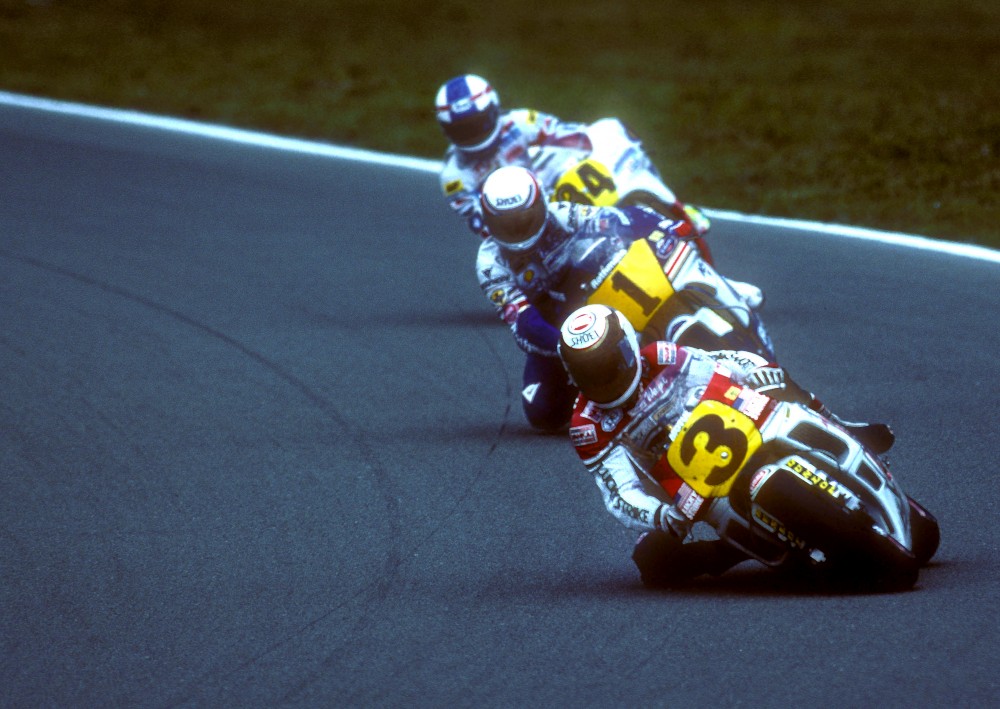 Rainey leads Lawson and Schawntz in 1989. It wasn’t always just serious racing back then…
Rainey leads Lawson and Schawntz in 1989. It wasn’t always just serious racing back then…
I did hear one story of you and Schwantz in a rental car in Austria. Care to elaborate?
We were celebrating his win at Salzburg and we went out and didn’t get back to the paddock until about two in the morning. I guess you can probably imagine the condition we were in. I’m driving back and Kevin is playing rally. I was the driver but he was the navigator. He was trying to tell me how fast I could go through this hairpin. We were pulling into the paddock. He said, “Go into first and just flick it through here and hold it wide open.” Okay. I do it.
We dropped two wheels off and we go down a cliff—literally a cliff. The car was on its side. He’s staring up at me and I’m looking down at him. We’re both hung in the belts. He looks at me and the headlights are staring off into these trees, because they’re pointing straight up. He looks up at me and he goes, “Try reverse.” I just turned the key off.
We had to try to get out. We had to open the door, which was hard to do, and undo our belts. The next day we had to get a tow truck to get the thing out of there. It was one of Porsche’s loaned cars. It was pretty fun. We had a good time.
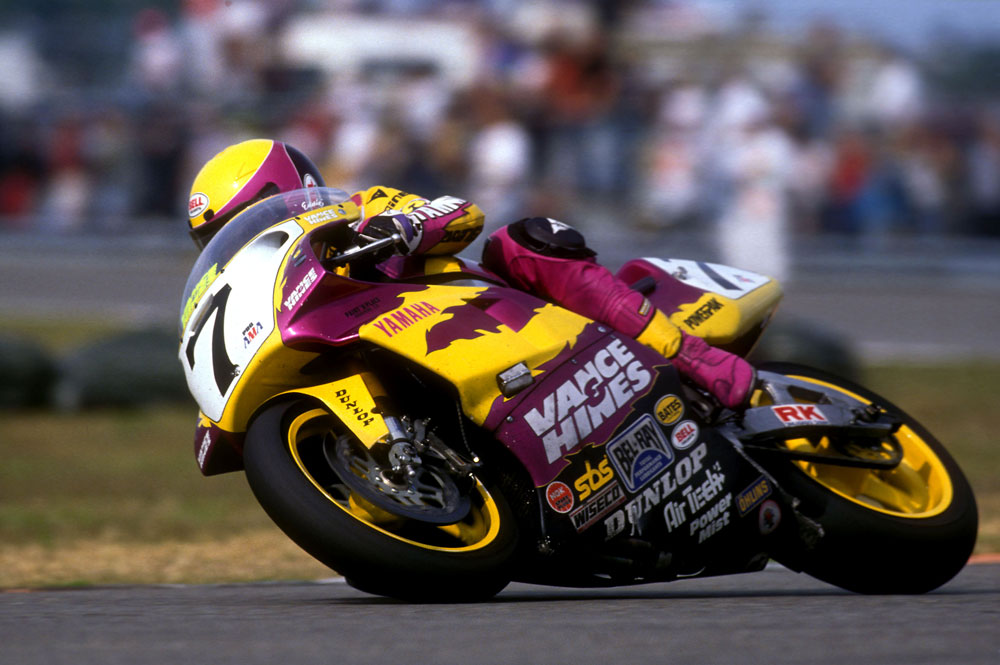 Lawson came out for a one-off ride at the Daytona 200 in 1993 and won it.
Lawson came out for a one-off ride at the Daytona 200 in 1993 and won it.
It seemed it wasn’t as corporate as the MotoGP is now.
No. It was out of control. We had a lot of fun.
What’s your opinion of current MotoGP compared to when you raced?
I haven’t been to any of the races, but from what everybody tells me, the paddock is a completely different thing. We used to all get together after the races. We’d go to somebody’s motorhome. It was either Gardner’s motorhome or Rainey’s, Schwantz’s or somebody else and it was a raging party until early morning. We did that every race. It was a lot of fun. Now I guess these guys don’t even talk to each other. It was fun. We had a good time.
You stopped in ’92. Won the Daytona 200, then into Indy cars, correct?
I had a brief go at it, but we had no sponsorship and all the wrong equipment, so unfortunately that didn’t work out. If we had a good ride I think we would have done pretty well.
Tell us about the super karts you and Rainey raced.
We were just playing with that because Wayne Rainey’s dad, Sandy, was helping us a lot. He worked on the karts and did the motors. It was fun for him and fun for us. When he passed we stopped doing that.
What do you do these days?
A lot of motocross and boating and running.
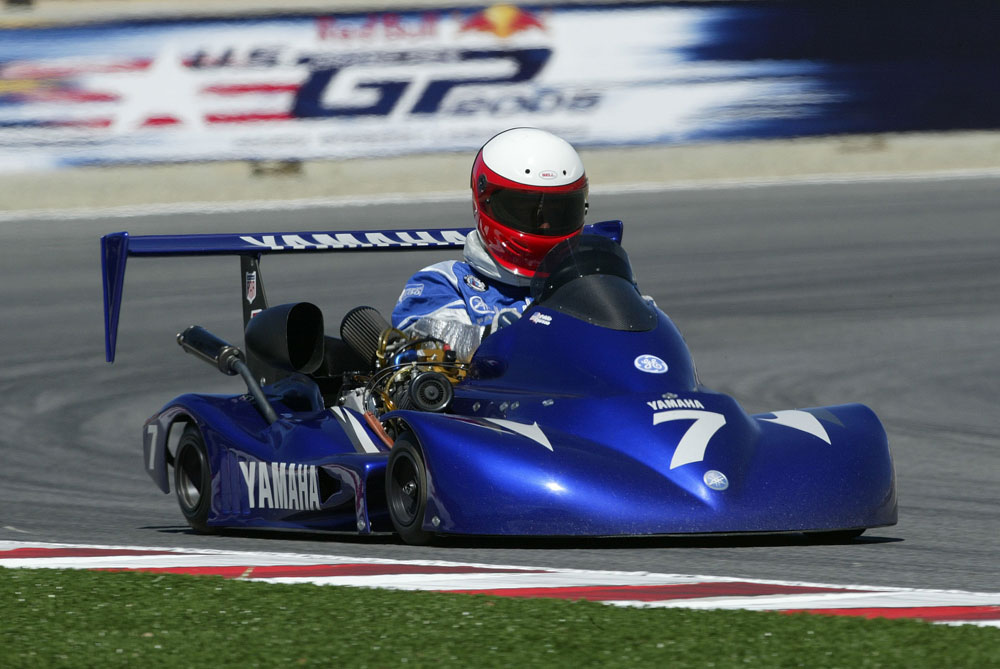 Lawson raced super karts a number of years back with his old teammate and close friend, Wayne Rainey.
Lawson raced super karts a number of years back with his old teammate and close friend, Wayne Rainey.
What bikes have you got?
I have a KX250F. I love that bike. I at least try to ride it once or twice a week at a motocross track. I’m based out of Lake Havasu, but we’ll drive over to ride on the motocross track at Riverside, California.
Do you keep up to date with the MotoAmerica series these days?
I do through Wayne (Rainey), and of course, I watch the races. It seems like the series is coming back. If we can get some more back like it was and get some rivalry, which it seems like there is, that will be great. It would be nice to get Kawasaki and that red team (Honda) in there too as well, and then have all the manufacturers.
What’s your opinion of the current of generation of riders?
I think there’s a lot of room to grow. I think once the manufacturers come in and things take off we’ll get some of that American talent again, I hope.
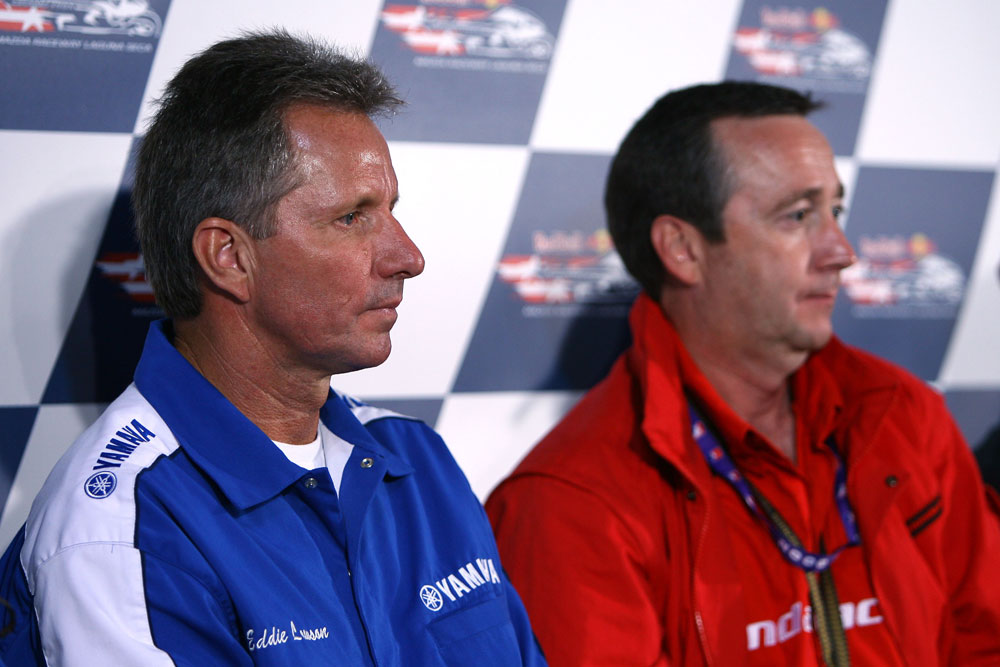 Lawson (left) and his old adversary, Freddie Spencer. Between them, they took six 500cc Grand Prix titles in the 1980s.
Lawson (left) and his old adversary, Freddie Spencer. Between them, they took six 500cc Grand Prix titles in the 1980s.
Did you ever have one rider that stands out in your career in all the classes you raced in that was your biggest rival?
When I went over to Europe the first year, of course, I had to race against Kenny and had to race against Barry Sheene. That was tough, all those guys. But then the next year, it was Freddie (Spencer) who was the guy. Then of course there was Wayne Gardner. Then came Schwantz and Rainey. From the start to the finish, I had to battle some heavy hitters.
You beat all of them, too.
At one time. They beat me, too, unfortunately. A lot. It was good. CN